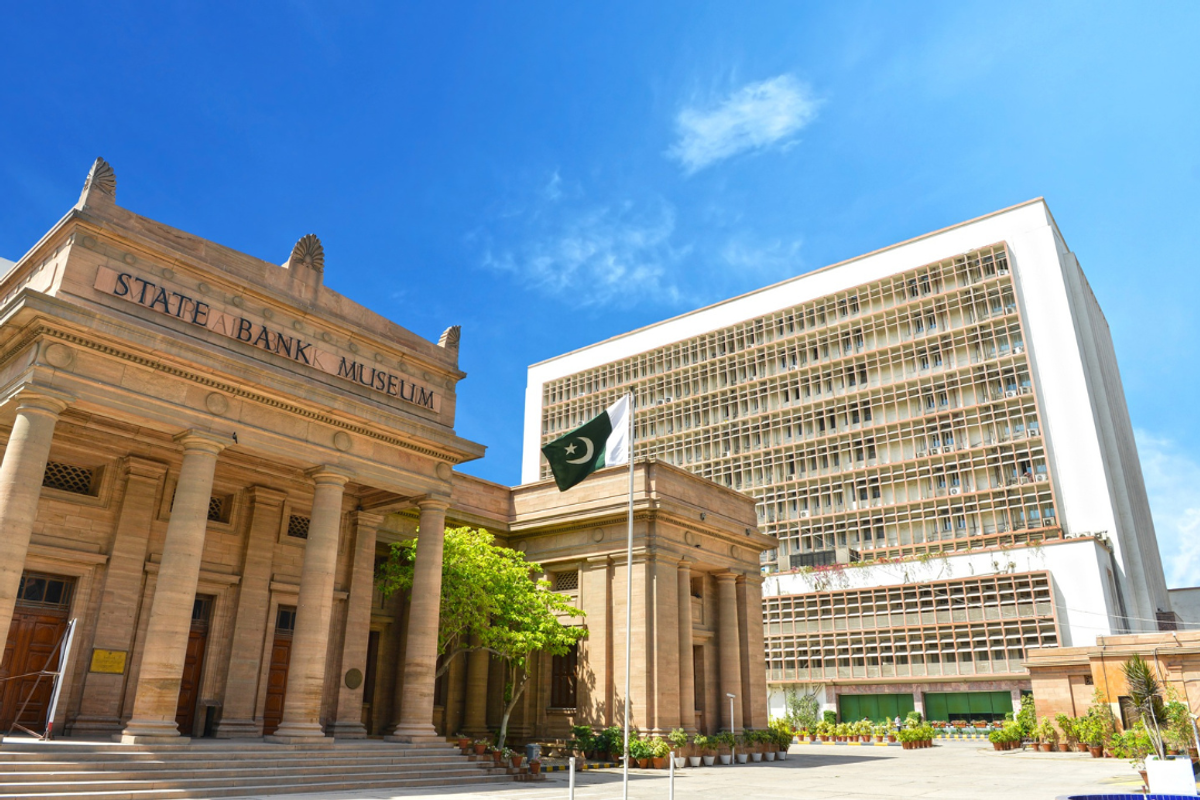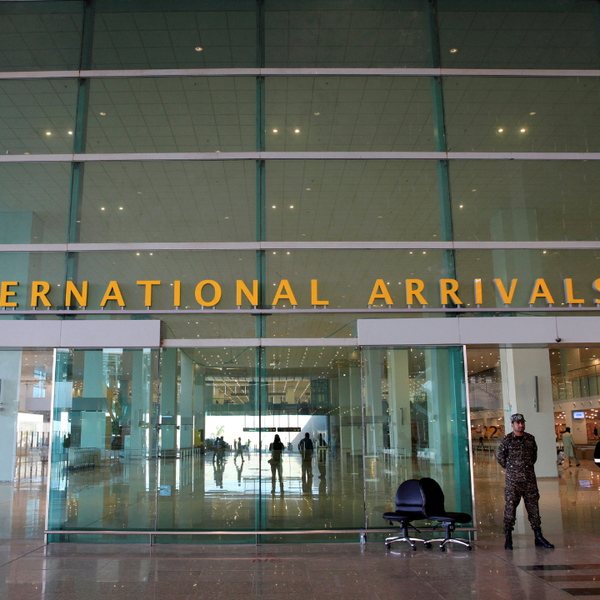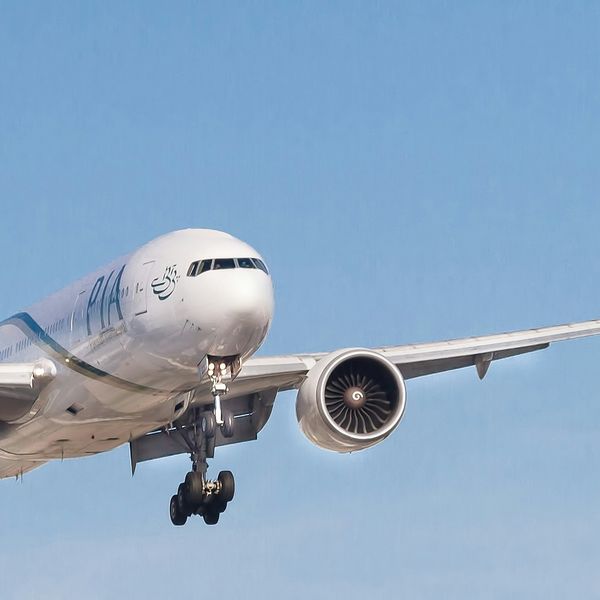Pakistan’s central bank likely to cut interest rate by 200-250bps on Nov 4
Since the current fiscal year’s start, the SBP has slashed the benchmark rate by 300 basis points
Nida Gulzar
Research Analyst
A distinguished economist with an M. Phil. in Applied Economics, Nida Gulzar has a strong research record. Nida has worked with the Pakistan Business Council (PBC), Pakistan Banks' Association (PBA), and KTrade, providing useful insights across economic sectors. Nida continues to impact economic debate and policy at the Economist Intelligence Unit (EIU) and Nukta. As a Women in Economics (WiE) Initiative mentor, she promotes inclusivity. Nida's eight 'Market Access Series papers help discover favourable market scenarios and export destinations.

Pakistan’s central bank’s Monetary Policy Committee (MPS) is set to meet on November 4, and it is very likely that it will decide to cut the benchmark interest rate by a further 200-250 basis points (bps).
After raising the interest rate to a record high of 22% last year, the State Bank of Pakistan (SBP) announced the first cut in four years — of 150bps — in June. Since the start of the current fiscal year in July, the SBP has further reduced the rate by 300bps in two successive MPC meetings to 17.5%. The last time the interest rate was at this level was in July 2022 when inflation was hovering around 24%.
In its last meeting on Sept 12, the SBP had announced a larger-than-expected rate cut of 200bps in response to a faster-than-expected drop in inflation, partly caused by delayed increases in administered energy prices and favorable movement in global oil and food rates. This reflects improved market sentiment as investors gauge the declining inflationary path and a more stable economic outlook.
Based on lower inflation outlook for fiscal year 2024-25 (FY25), Nukta anticipates the interest rate would come down further in FY25’s second half. Based on an average inflation outlook of 8% for FY25 and favorable external outlook, the SBP would have additional room to reduce the interest rate in 2HFY25 too.
According to Nukta research, the upcoming cut will bring the real interest rate, which currently stands at 10.57%, to 8.07%, still higher than Pakistan’s historical average of 200-300bps.
Why a further rate cut makes sense
Favorable inflation outlook
The primary reason for a possible rate cut is the favorable inflation outlook. Headline inflation stood at 6.9% year-on-year in September — a 44-month low — and is expected to be measured at 6.8% in October, according to Nukta estimates.
Inflation will further drop down to 5% in the next few months before increasing again to double digits in the last two months of FY25. The average inflation for FY25 is expected to be 8%, according to Nukta estimates.
Interestingly, inflation for 3QFY25 is anticipated to clock in at 5.3% and then rise to 10.3% in 4QFY25. However, average monthly inflation is 1.2% for 2HFY25 but it is inching upwards, mainly led by high base. Thus, the interest rate can come down to 11% to 12% by end-FY25.
Secondary market yields imply a 200-300bps cut
Pakistan’s secondary market yields declined to their lowest levels in up to two years following the SBP’s Sept 12 rate cut announcement.
The yields dropped sharply as investors placed bets on monetary easing amid dropping inflation. The three-month and six-month yield rates are 326 and 370 basis points lower than the policy rate, which is 17.5% (the yield-to-policy spread), implying that investors expect a further reduction of 300-350bps.
Furthermore, the six-month KIBOR is down to an almost three-year low of 14.4%, which further indicates the market is expecting a cut of 300bps.
Current account deficit on downward trajectory
Pakistan’s external position is rebounding as evident from the second consecutive current account surplus in Sept of $119 million. This is primarily due to the contained trade deficit and higher remittances numbers.
The overall trade balance has expanded by 37% year-on-year in September. The country incurred a cumulative current account deficit of $98 million in the first three months of FY25, a significant 92% yearly improvement, compared to the deficit of $1.2 billion recorded in FY24’s first quarter.
A 39% yearly increase in remittances in this quarter, stemming from Saudi Arabia ($681 million), followed by the UAE ($560m), and the UK ($424m), has been crucial for supporting the country’s current account, and boosting economic activity in Pakistan.
Reserves at comfortable levels
Foreign exchange reserves held by Pakistan’s central bank have reached a more than two-year high of $11 billion — last year, FX reserves were under $8 billion — with an import cover of more than 2.4 months, despite a $1.5 billion repayment of loans. This is majorly attributable to the IMF’s first tranche of $1 billion from the 37-month Extended Fund Facility (EFF).
Going forward, the recent IMF EFF of $7 billion will unlock further multilateral and bilateral financing while reducing the risk of currency destabilization. According to IMF estimates, foreign exchange reserves are anticipated to increase by $12.8 billion by June 2025.
Lower interest rate and LSM growth essential for growth
After a slight uptick in July, the most recent manufacturing index statistic for August showed a contraction of 2.7% year-over-year, marking the first decline of this fiscal year. Nonetheless, the food industry, garments, and petroleum products — which accounted for 23% of the total weight — contributed positively to the growth.
A lower interest rate will help the manufacturing index recover and stimulate GDP growth, as seen by the rebound of large-scale manufacturing post-April. The country needs more growth from large-scale industry to sustain overall growth since agriculture output is predicted to be low, restricting GDP growth.
What is the market expecting?
Pakistani brokerage houses expect the State Bank of Pakistan to cut the interest rate to around 15% from the current 17.5% on the back of easing inflation and a widening real interest rate.
Meanwhile, international agencies such as Fitch Ratings also anticipate the central bank will reduce the interest rate to 16% by December.
If the SBP’s Monetary Policy Committee cuts the rate by 200-250bps on Nov 4, it would take the year’s total to a record cut of around 650-700bps.







Comments
See what people are discussing